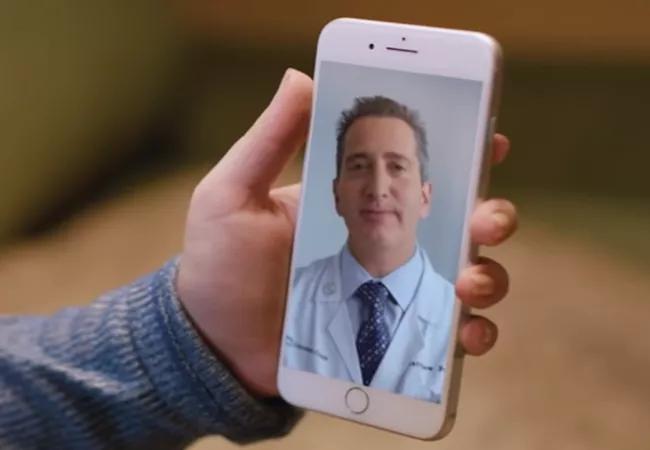Building trust and performing a virtual physical exam

By Sarah Vogler, MD, and Amy Lightner, MD
Cleveland Clinic is a non-profit academic medical center. Advertising on our site helps support our mission. We do not endorse non-Cleveland Clinic products or services. Policy
COVID-19 has accelerated the adoption of virtual visits in colorectal surgery. We recently published an article in the British Journal of Surgery discussing this transformation and the aspects of it that we believe are here to stay long after the pandemic has passed.
Surgeons especially are hesitant to embrace the virtual visit, as we don’t feel comfortable offering a definitive diagnosis in the absence of an in-person physical exam. However, we argue that, with the right language, we can offer patients a better idea of their potential diagnosis as a bridge to in-person examination. In the article, we propose a conversation like the following:
“Avoid: ‘You have rectal cancer.’
Preferred: ‘Your medical records, colonoscopy report and imaging, which I have reviewed, state that you have a rectal cancer at 8 cm.’
Avoid: ‘You need chemotherapy, radiotherapy and surgical resection.’
Preferred: ‘At our institution, the standard treatment for this condition includes chemotherapy, radiotherapy and surgical resection.’”
This less direct language allows us to lay a foundation and center expectations for future, in-person visits with the patient. Using the available data — imaging, lab results, standard treatment paths — more explicitly in the conversation builds trust with the patient, which can be more difficult in a virtual environment.
While an in-person physical exam is fundamental to diagnostics in our field, the virtual physical exam can offer many insights. An electronic medical record template completed after a virtual physical exam could be something like the following, which we proposed in our recent article.
“Patient-reported height 5′ 6′′ and weight 130 lbs
General: alert, oriented, easily able to interact verbally by video conference, appears well nourished Psych: calm and focused
Head/neuro: head appears normocephalic, no facial abnormalities, CN II–XII grossly intact
Pulmonary: normal respiratory effort, easily able to carry on conversation without shortness of breath or coughing
Cardiovascular: patient describes extremities as warm, no visible swelling in feet or ankles
Abdominal: well defined abdominal contour, normal appearing umbilicus and abdominal length and girth, no visible protrusions or hernias when patient asked to sit up slightly, no scars, patient denies any areas of pain/tenderness
Skin: patient denies any abnormal lesions/none visualized
Motor: patient able to stand, walk length of room and lay down with good strength, stability and coordination”
As you can see, the virtual visit offers the ability to glean many insights critical to diagnostics, even to a field like ours. And many patients may even prefer to conduct certain visits this way, especially in generations more comfortable with the format.
COVID-19 has forced us to find creative ways to help our patients and provide expertise from afar and to do so in an incredibly truncated timeline. We did not have the privilege to conduct our normal process of meticulously gathering and analyzing the available data before adopting something new into our surgical routines. Perhaps some of the adaptations developed during this pandemic will persist into the future of colorectal surgery, one that is more efficient and sensitive to patient preference.
Drs. Vogler and Lightner are surgeons in the Department of Colorectal Surgery in Cleveland Clinic’s Digestive Disease & Surgical Institute.

Patients report improved sense of smell and taste

Clinicians who are accustomed to uncertainty can do well by patients

Unique skin changes can occur after infection or vaccine

Cleveland Clinic analysis suggests that obtaining care for the virus might reveal a previously undiagnosed condition

As the pandemic evolves, rheumatologists must continue to be mindful of most vulnerable patients

Early results suggest positive outcomes from COVID-19 PrEP treatment

Could the virus have caused the condition or triggered previously undiagnosed disease?

Five categories of cutaneous abnormalities are associated with COVID-19